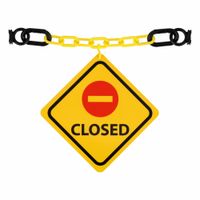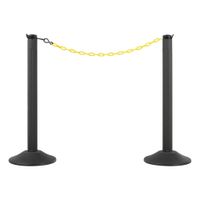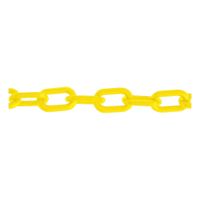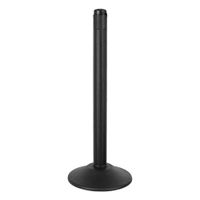Call +(254) 703 030 000 / 751 483 999 / 721 704 777
- Home
- Security
- Access Barriers Crowd Control
- Plastic Chain Barriers
.....Read More
Frequently Asked Questions
What are plastic chain barriers used for?
Plastic chain barriers are versatile tools used for a variety of purposes across different settings. Primarily, they serve as a cost-effective and lightweight solution for crowd control and area delineation. In public events, such as concerts, festivals, or sports events, they help manage the flow of people, ensuring safety and organization.
In industrial and construction sites, plastic chain barriers are used to cordon off hazardous areas, preventing unauthorized access and reducing the risk of accidents. They are often employed to mark boundaries around machinery, open pits, or areas under maintenance. Their bright colors, typically red, yellow, or orange, enhance visibility, making them effective in alerting individuals to potential dangers.
Retail environments utilize plastic chain barriers to guide customers, manage queues, and section off areas during cleaning or restocking. They are also used in parking lots to designate parking spaces, direct traffic flow, or temporarily block off areas.
In educational institutions, plastic chain barriers help in organizing events, managing student movement, and securing restricted zones. They are also used in playgrounds to define play areas or keep children away from unsafe zones.
Plastic chain barriers are favored for their durability and weather resistance, making them suitable for both indoor and outdoor use. They are easy to install, remove, and store, offering flexibility for temporary or permanent applications. Additionally, they are available in various lengths and thicknesses, allowing customization to fit specific needs.
Overall, plastic chain barriers are an essential tool for safety, organization, and crowd management across numerous industries and environments.
How do plastic chain barriers help in crowd control?
Plastic chain barriers are an effective tool for crowd control due to their versatility, visibility, and ease of use. These barriers are lightweight and portable, making them easy to set up, rearrange, and dismantle as needed. This flexibility allows event organizers and security personnel to quickly adapt to changing crowd dynamics and manage foot traffic efficiently.
The bright colors of plastic chain barriers, often in red, yellow, or orange, enhance visibility, ensuring that they are easily noticed by the public. This visibility helps in guiding people along designated paths, preventing unauthorized access to restricted areas, and maintaining order in crowded environments such as concerts, festivals, or public gatherings.
Plastic chain barriers are also cost-effective compared to metal or retractable barriers. They are durable and weather-resistant, making them suitable for both indoor and outdoor use. Their resistance to rust and corrosion ensures longevity, reducing the need for frequent replacements and maintenance.
Additionally, plastic chain barriers can be customized in length and configuration to suit specific needs. They can be easily connected to stanchions, posts, or other barriers, allowing for the creation of various crowd control layouts. This adaptability is crucial in managing different crowd sizes and ensuring safety.
Furthermore, plastic chain barriers are a safer option as they are less likely to cause injury upon accidental contact compared to metal barriers. This safety feature is particularly important in environments with children or in situations where crowd movement is unpredictable.
Overall, plastic chain barriers provide an efficient, economical, and safe solution for managing crowds, directing pedestrian flow, and enhancing security at events and public spaces.
What are the benefits of using plastic chain barriers over metal ones?
Plastic chain barriers offer several advantages over metal ones:
1. **Cost-Effectiveness**: Plastic chains are generally less expensive to produce and purchase than metal chains, making them a budget-friendly option for many applications.
2. **Lightweight**: Plastic chains are significantly lighter than metal chains, which makes them easier to handle, transport, and install. This reduces labor costs and the risk of injury during setup.
3. **Corrosion Resistance**: Unlike metal, plastic does not rust or corrode when exposed to moisture or chemicals, making plastic chains ideal for outdoor use or in environments where they may come into contact with corrosive substances.
4. **Weather Resistance**: Plastic chains can withstand various weather conditions, including rain, snow, and UV exposure, without degrading, whereas metal chains may require protective coatings to prevent rust and corrosion.
5. **Safety**: Plastic chains are less likely to cause injury if someone accidentally comes into contact with them. They are also non-conductive, reducing the risk of electrical hazards.
6. **Versatility**: Available in a variety of colors, plastic chains can be used for color-coded systems or to increase visibility for safety purposes. They can also be easily cut to the desired length without specialized tools.
7. **Maintenance**: Plastic chains require minimal maintenance compared to metal chains, which may need regular inspections and treatments to prevent rust and wear.
8. **Noise Reduction**: Plastic chains produce less noise when moved or impacted, which can be beneficial in environments where noise reduction is important.
9. **Environmental Impact**: Many plastic chains are made from recyclable materials, and their durability means they need to be replaced less frequently, reducing waste.
Overall, plastic chain barriers provide a practical, durable, and cost-effective solution for a wide range of applications.
How do you install plastic chain barriers?
To install plastic chain barriers, follow these steps:
1. **Plan the Layout**: Determine the area where the barrier is needed. Measure the length to calculate the amount of chain and the number of posts required.
2. **Gather Materials**: Obtain plastic chain, posts (with bases if needed), connectors, and any necessary tools like a mallet or drill.
3. **Mark the Locations**: Use chalk or tape to mark where each post will be placed. Ensure the distance between posts is consistent and suitable for the chain's length.
4. **Install Posts**:
- For soft ground, use a mallet to drive the posts into the ground at the marked spots.
- For hard surfaces, use posts with weighted bases or drill holes for mounting brackets.
5. **Attach Chains**:
- Use connectors or hooks to attach the chain to the top of each post.
- Ensure the chain is taut but not overly tight to allow for some movement.
6. **Adjust and Secure**: Check the alignment and height of the chain. Adjust the posts if necessary to maintain a straight line or desired shape.
7. **Test Stability**: Ensure all posts are secure and the chain is properly attached. Make adjustments as needed for stability and appearance.
8. **Add Signage (Optional)**: Attach any necessary signs to the chain or posts to convey messages like "No Entry" or "Caution."
9. **Regular Maintenance**: Periodically check the barrier for any damage or loosening and make repairs as needed to maintain effectiveness.
This process ensures a functional and visually appealing barrier for crowd control, safety, or demarcation purposes.
Can plastic chain barriers be used outdoors?
Yes, plastic chain barriers can be used outdoors. They are designed to be durable and weather-resistant, making them suitable for various outdoor applications. These barriers are typically made from high-density polyethylene (HDPE) or similar materials that can withstand exposure to sunlight, rain, and temperature fluctuations without degrading quickly.
Plastic chain barriers are lightweight, which makes them easy to install, move, and store. They are often used for crowd control, marking boundaries, or directing pedestrian and vehicular traffic in outdoor settings such as parking lots, parks, construction sites, and events. The chains are available in various colors, which can enhance visibility and help in demarcating specific areas or conveying warnings.
Moreover, plastic chain barriers are resistant to rust and corrosion, unlike metal chains, which makes them particularly advantageous in humid or coastal environments. They are also non-conductive, providing a safer option in areas where electrical hazards might be a concern.
However, while plastic chain barriers are generally robust, prolonged exposure to harsh environmental conditions, such as extreme UV radiation or severe weather, can eventually lead to fading or brittleness. To mitigate this, some manufacturers incorporate UV inhibitors into the plastic to extend the lifespan of the chains when used outdoors.
In summary, plastic chain barriers are a practical and versatile solution for outdoor use, offering durability, ease of use, and resistance to environmental factors. Regular inspection and maintenance can further ensure their longevity and effectiveness in outdoor applications.
What are the different types of plastic chain barriers available?
Plastic chain barriers come in various types, each designed for specific applications and environments. Here are the main types:
1. **Standard Plastic Chains**: These are lightweight and often used for temporary crowd control or marking restricted areas. They are available in various colors for visibility and can be easily cut to the desired length.
2. **Heavy-Duty Plastic Chains**: Made from thicker, more durable plastic, these chains are suitable for outdoor use and can withstand harsher weather conditions. They are often used in industrial settings or for long-term installations.
3. **UV-Resistant Plastic Chains**: Designed to resist fading and degradation from prolonged sun exposure, these chains are ideal for outdoor use where they will be exposed to sunlight for extended periods.
4. **Reflective Plastic Chains**: These chains have reflective properties, making them visible in low-light conditions. They are often used in areas where visibility is crucial, such as near roadways or in parking lots.
5. **Fluorescent Plastic Chains**: Available in bright, neon colors, these chains are highly visible during the day and can glow under UV light, making them suitable for events or areas requiring high visibility.
6. **Linkable Plastic Chains**: These chains have detachable links, allowing for easy customization of length and configuration. They are versatile and can be adapted for various uses.
7. **Biodegradable Plastic Chains**: Made from eco-friendly materials, these chains are designed to break down over time, reducing environmental impact. They are suitable for temporary installations where sustainability is a concern.
8. **Decorative Plastic Chains**: Often used for aesthetic purposes, these chains come in various designs and colors to complement the decor of events or venues.
Each type of plastic chain barrier serves a specific purpose, and the choice depends on factors like durability, visibility, environmental conditions, and aesthetic requirements.
How do you maintain and clean plastic chain barriers?
To maintain and clean plastic chain barriers, follow these steps:
1. **Regular Inspection**: Frequently check the chains for any signs of wear, damage, or fading. Look for cracks, breaks, or discoloration that might compromise their effectiveness or appearance.
2. **Cleaning**: Use a mild detergent mixed with warm water to clean the chains. Avoid harsh chemicals that can degrade the plastic. Use a soft cloth or sponge to gently scrub the surface, removing dirt, grime, and any buildup. For stubborn stains, a soft-bristled brush can be used.
3. **Rinsing**: After cleaning, thoroughly rinse the chains with clean water to remove any soap residue. Soap left on the chains can attract more dirt and may cause the plastic to become sticky over time.
4. **Drying**: Allow the chains to air dry completely before reinstallation. This prevents water spots and ensures that the chains do not become slippery or attract dirt.
5. **UV Protection**: If the chains are used outdoors, consider applying a UV protectant spray to prevent fading and brittleness caused by sun exposure. This will extend the life of the chains and maintain their color.
6. **Storage**: When not in use, store the chains in a cool, dry place away from direct sunlight and extreme temperatures. This prevents unnecessary wear and prolongs their lifespan.
7. **Repairs and Replacement**: Promptly repair or replace any damaged sections of the chain to maintain safety and functionality. Keep spare links or sections on hand for quick repairs.
8. **Regular Maintenance Schedule**: Establish a routine maintenance schedule to ensure the chains remain in good condition. Regular upkeep will prevent minor issues from becoming major problems.
By following these steps, plastic chain barriers can be kept clean, functional, and visually appealing for extended use.




